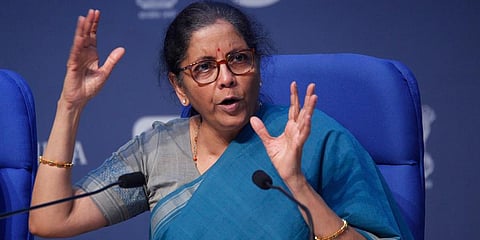

NEW DELHI: As the Country recorded the highest tally of fresh coronavirus cases in a day on Sunday, Union Finance Minister Nirmala Sitharaman announced that the public health expenditure will be increased and health reforms will be made at the grassroots level to prepare better for future pandemics.
However, she did not commit the quantum of increase in the health budget in India, which is among the lowest globally.
Apart from increasing public health spending, the government has also decided to create a dedicated infectious diseases block at hospitals and establish government diagnostic lab till the block level to strengthen the country’s testing capacity at the grass-roots level.
The announcement came as COVID-19 case tally reached 90,927 in India on Sunday morning with 4,987 confirmed cases added in a day.
Special focus will also be on ramping health and wellness centres in villages, the FM meanwhile added.
“The government will be increasing investments in public health to be absolutely ready for such eventualities in future,” said Sitharaman, speaking at her fifth consecutive press conference on the allocation of Rs 20 lakh economic stimulus package in different sectors.
Public health specialists, following the announcement, are anticipating a specified plan from the Union health ministry on strengthening health capacities in rural areas—where the next wave of the outbreak is now feared with millions of migrants from urban and semi-urban areas returning home.
“Jagan Reddy government in Andhra Pradesh has presented a good example by allocating nearly Rs 16,500 crore for bringing primary care close to the villages—we should hope for something similar on the national scale before the endemic progresses further,” said Dr Oommen John, senior researcher in public health at the George Institute of Global Health.
Some others, however, pointed out that the proposals outlined by Sitharaman are mostly all part of the National Health Policy, 2017.
In India, the total health expenditure on health is about 3.6 per cent of the GDP, according to the WHO figures for the year 2017 and this includes expenditure by the Central and state government as well as the private sector.
Union government’s public expenditure on health now stands at just about 1.3 per cent of the GDP but even then, it is way lower than the average expenditure by countries clubbed as among the "poorest".
More worryingly, the country’s public health expenditure is lower when compared with other South-East Asian countries like Nepal, Sri Lanka, Bhutan, Indonesia, Thailand and the tiny island country of Timor-Leste.
The Centre had set a target of spending 2.5 per cent of the GDP on health by 2025 but the year on year increase in the sector has been too low--giving rise to concerns that even this low target might be missed.